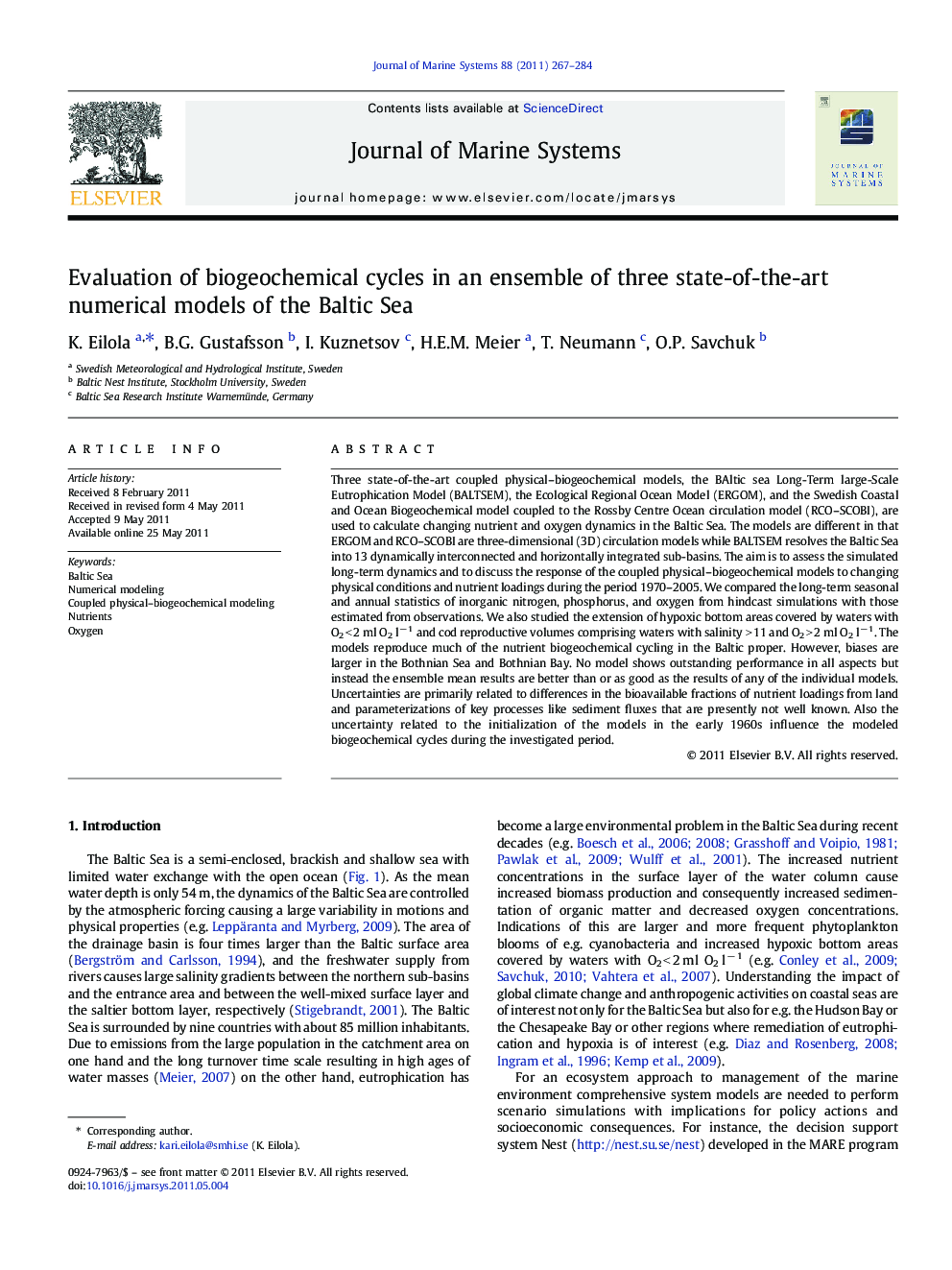| کد مقاله | کد نشریه | سال انتشار | مقاله انگلیسی | نسخه تمام متن |
|---|---|---|---|---|
| 4548406 | 1327902 | 2011 | 18 صفحه PDF | دانلود رایگان |

Three state-of-the-art coupled physical–biogeochemical models, the BAltic sea Long-Term large-Scale Eutrophication Model (BALTSEM), the Ecological Regional Ocean Model (ERGOM), and the Swedish Coastal and Ocean Biogeochemical model coupled to the Rossby Centre Ocean circulation model (RCO–SCOBI), are used to calculate changing nutrient and oxygen dynamics in the Baltic Sea. The models are different in that ERGOM and RCO–SCOBI are three-dimensional (3D) circulation models while BALTSEM resolves the Baltic Sea into 13 dynamically interconnected and horizontally integrated sub-basins. The aim is to assess the simulated long-term dynamics and to discuss the response of the coupled physical–biogeochemical models to changing physical conditions and nutrient loadings during the period 1970–2005. We compared the long-term seasonal and annual statistics of inorganic nitrogen, phosphorus, and oxygen from hindcast simulations with those estimated from observations. We also studied the extension of hypoxic bottom areas covered by waters with O2 < 2 ml O2 l− 1 and cod reproductive volumes comprising waters with salinity > 11 and O2 > 2 ml O2 l− 1. The models reproduce much of the nutrient biogeochemical cycling in the Baltic proper. However, biases are larger in the Bothnian Sea and Bothnian Bay. No model shows outstanding performance in all aspects but instead the ensemble mean results are better than or as good as the results of any of the individual models. Uncertainties are primarily related to differences in the bioavailable fractions of nutrient loadings from land and parameterizations of key processes like sediment fluxes that are presently not well known. Also the uncertainty related to the initialization of the models in the early 1960s influence the modeled biogeochemical cycles during the investigated period.
Research highlights
► Three numerical models simulate long-term biogeochemical cycles in the Baltic Sea.
► The Baltic proper is rather well simulated; biases larger in the Gulf of Bothnia.
► The ensembles mean results better than or as good as individual models results.
► Uncertainty caused by bioavailable nutrient loadings from land and sediment fluxes.
► Uncertain initialization influence the simulated biogeochemical cycles.
Journal: Journal of Marine Systems - Volume 88, Issue 2, November 2011, Pages 267–284